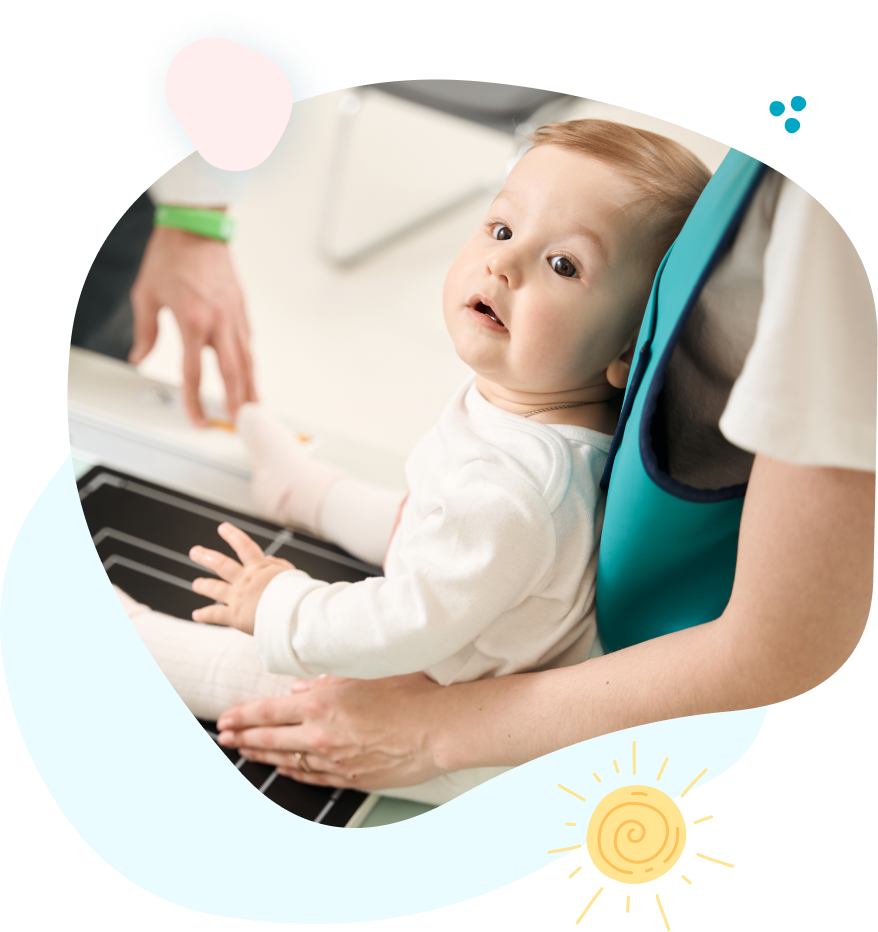Your Clinic
SET A LOCATION
Your Clinic
SET A LOCATION
Plagiocephaly, also known as flat head syndrome, is a condition where an infant’s head develops an asymmetrical shape due to external pressures on the skull. This condition often raises concerns among parents, but with early diagnosis and treatment, it can be effectively managed.
Plagiocephaly typically develops when a baby’s soft skull becomes flattened in one area due to consistent pressure. Common causes include:
Sleeping or resting in the same position can cause uneven pressure.
A tight neck muscle can limit a baby’s head movement, increasing the risk of flat spots.
Premature babies have softer skulls and may spend extended periods lying down in neonatal care.
Positional Plagiocephaly: The most common form, caused by external pressure on the skull.
Brachycephaly: A flattening of the back of the head, often from prolonged lying on the back.
Scaphocephaly: A long, narrow head shape caused by consistent pressure on the sides of the skull.
Craniosynostosis: A rare and more serious type, where the skull bones fuse prematurely, requiring surgical intervention.
Children with plagiocephaly benefit from our specialized positioning and therapeutic tools designed to improve head shape and support proper developmental positioning. Our interventions address both the cosmetic and functional aspects of this condition.
Attend our clinics for expert orthotics evaluations and fittings, designed to improve mobility and ensure optimal comfort tailored to your needs. Children at PPT can attend monthly clinics for custom wheelchairs or orthotics, designed to enhance mobility and ensure proper postural alignment. These specialized devices support proper body alignment and improve functional mobility.
While mild cases of plagiocephaly can often resolve naturally as the baby grows and becomes more mobile, more pronounced cases may require intervention. Effective treatment options include physical therapy, occupational therapy, and, in some cases, the use of cranial orthotic helmets.
Physical therapy focuses on improving the baby’s range of motion and strengthening neck muscles, particularly if torticollis is present. Techniques include:
Stretching exercises: Help to lengthen tight muscles and promote even head movement.
Repositioning strategies: Educate parents on methods to reduce pressure on flat areas during sleep and play.
Tummy time: Encourage activities where the baby lies on their stomach, reducing pressure on the back of the head and strengthening upper body muscles.


Occupational therapists take a holistic approach, working on the baby’s developmental milestones and integrating head shape improvement into daily routines:
Developmental support: Guide parents in stimulating movement and encouraging sensory exploration.
Adaptive equipment: Suggest items like positioning pillows to alleviate pressure during rest.
Feeding positioning: Teach optimal techniques for reducing head pressure during feeding sessions.
In moderate to severe cases of plagiocephaly, cranial orthotic helmets may be recommended. These custom-fitted devices gently guide the baby’s skull into a more symmetrical shape as it grows.
Helmets are most effective when started between 4 and 12 months of age when the skull is still malleable.
Your pediatrician or therapist will assess the baby’s condition and refer you to an orthotist for helmet evaluation and fitting.
Helmets are typically worn for 20-23 hours a day over several months, with regular adjustments to ensure proper fit and effectiveness.
If you notice uneven head shapes, limited neck movement, or persistent flat spots, consult a pediatrician. Early intervention, typically before six months of age, offers the best outcomes. A team approach that includes pediatricians, physical therapists, occupational therapists, and orthotists ensures comprehensive care for your child.
We empower children, families, and the community to learn, grow, and celebrate every child's unique abilities.
Quick Links
Contact Details
Phone: 561-376-2573 | 561-918-0190
Fax: 561-218-4939
VIP Concierge: 561-717-1764
Clinic Locations
All Rights Reserved | Progressive Pediatric Therapy, Inc. | Privacy Policy | Terms of Service
Site by Spearlance